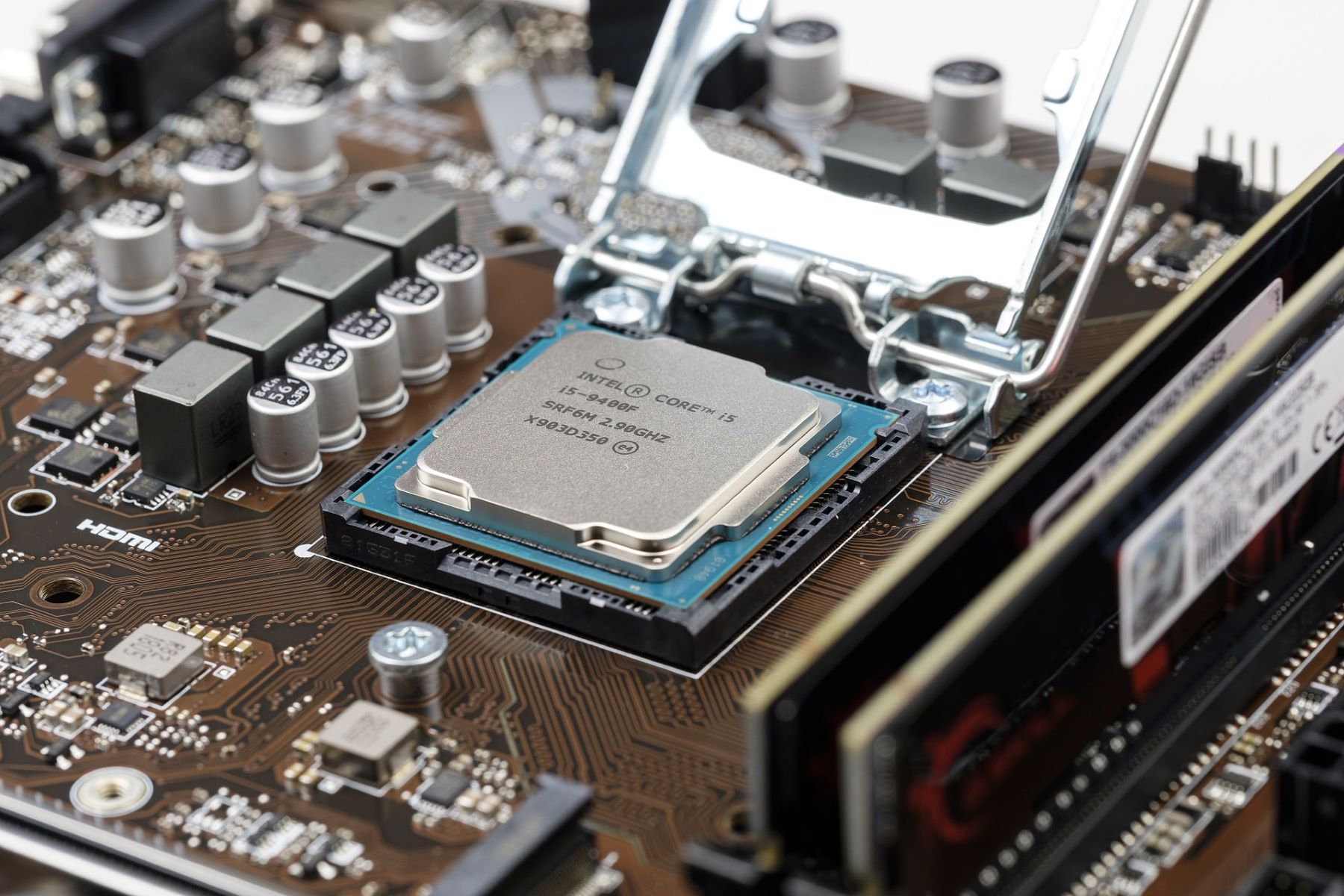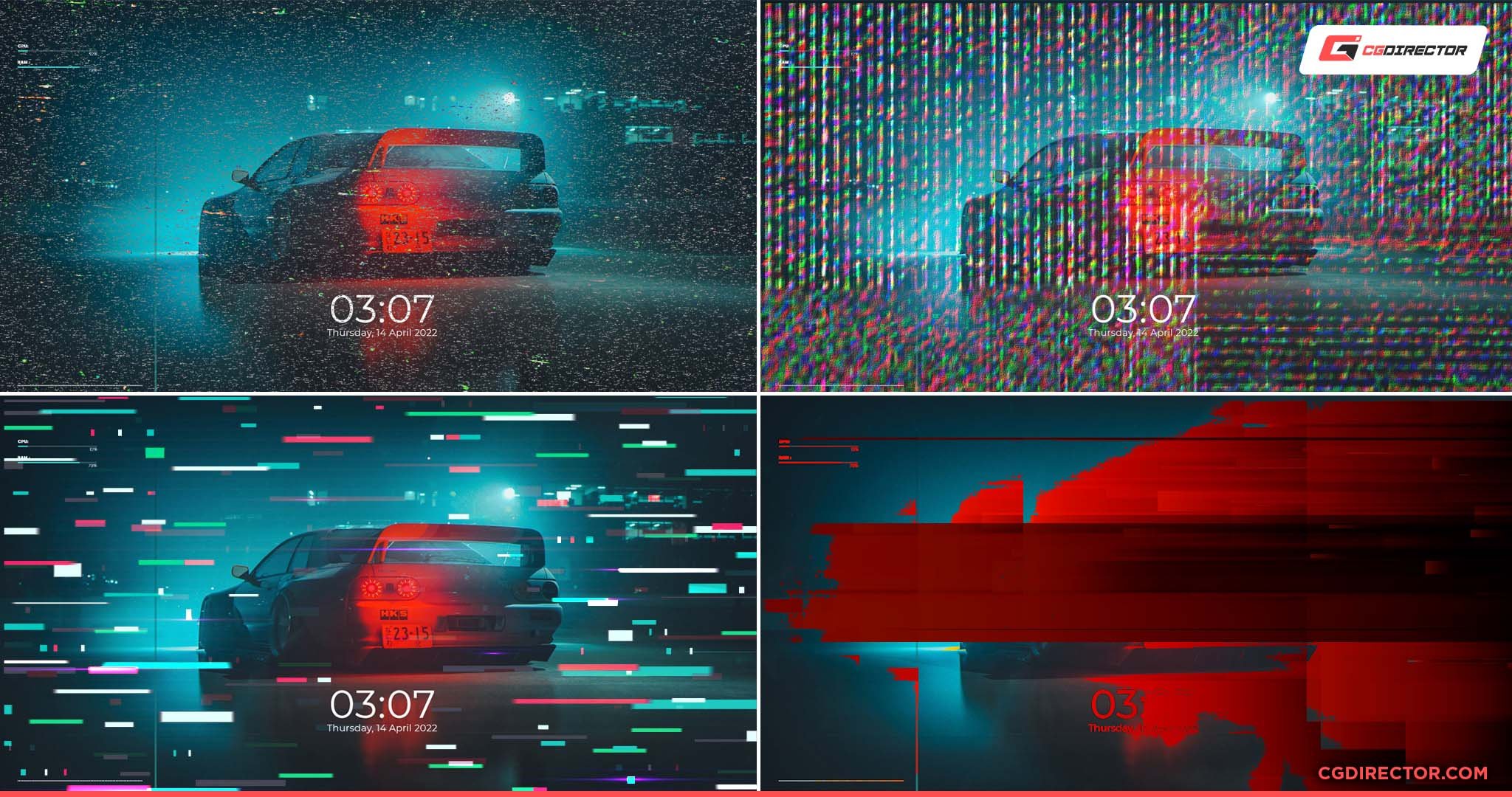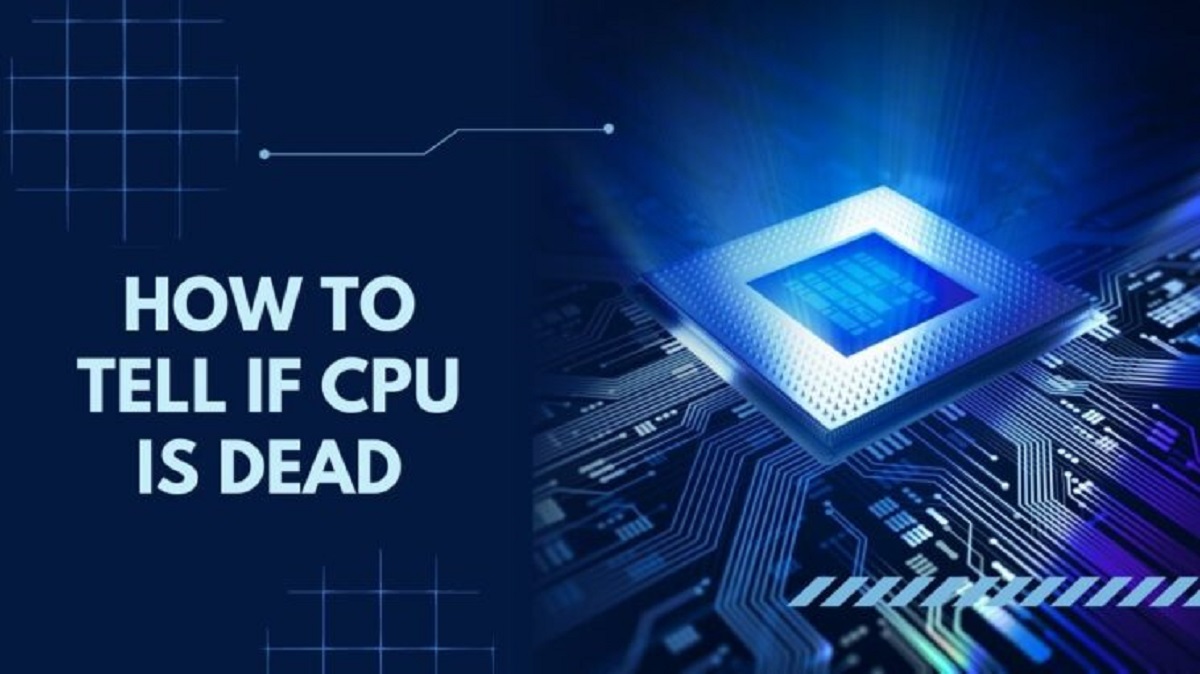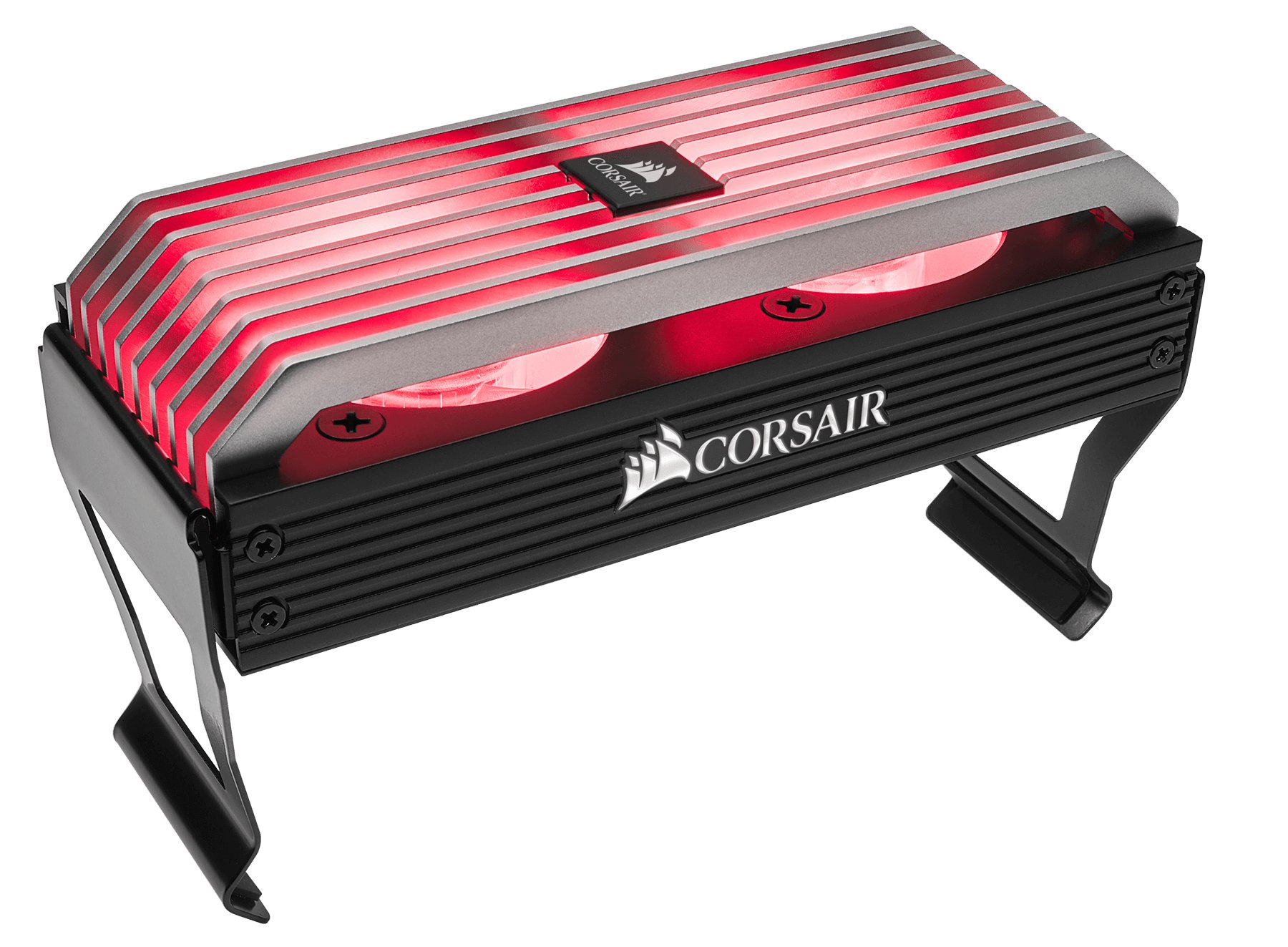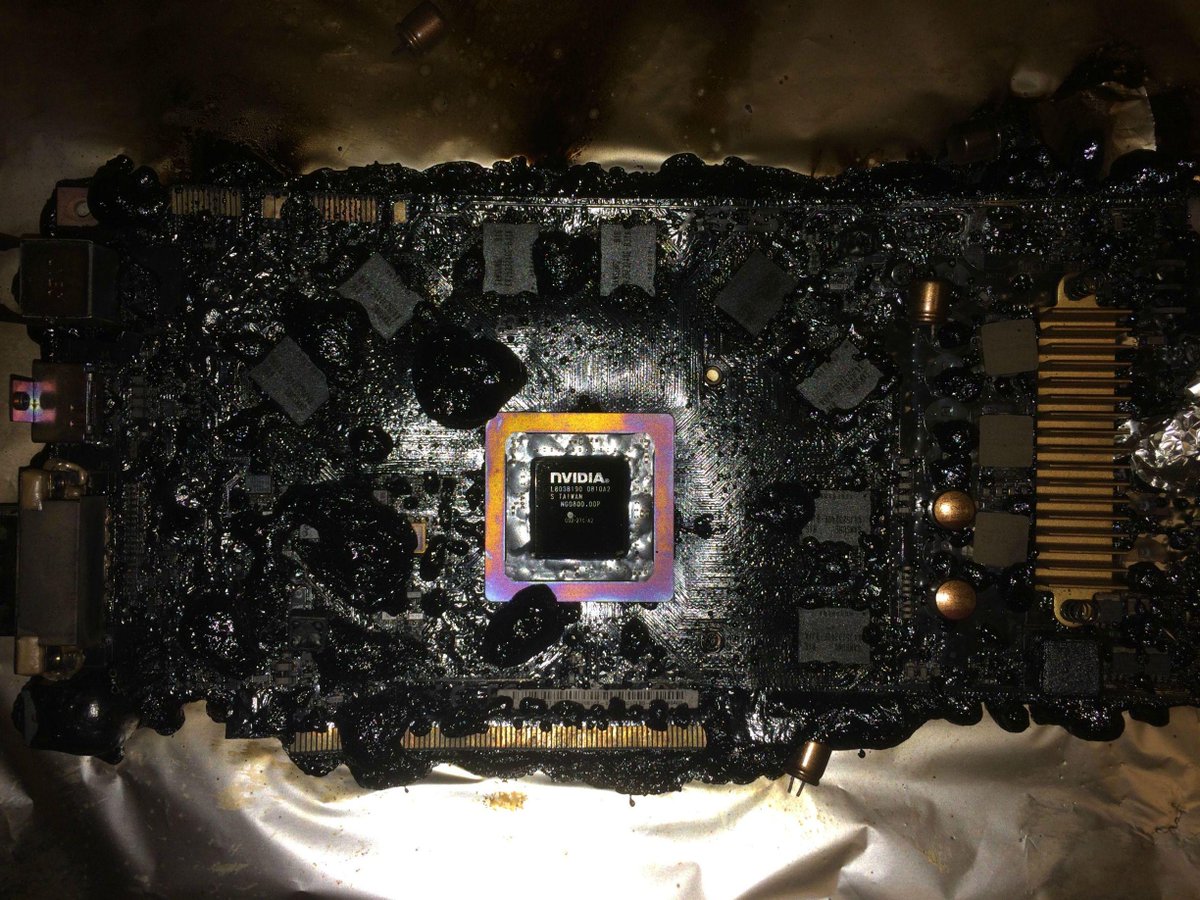Signs of a Dead Motherboard
A motherboard is like the heart of a computer, connecting all the essential components and enabling them to work together harmoniously. When a motherboard fails, it can have a significant impact on the overall functionality of the system. Here are some telltale signs that can indicate a dead motherboard:
- No Power: One of the most obvious signs of a dead motherboard is when there is no power to the computer. If pressing the power button does not result in any response or if the computer fails to boot up, it could be a clear indication of a motherboard failure.
- No POST (Power-On Self-Test): The POST is a diagnostic process that a computer performs on startup to check the basic hardware components. If your computer fails to complete the POST or if you do not hear a beep sound indicating a successful POST, it suggests a potential motherboard problem.
- No Display: When the motherboard fails, it can prevent the graphics card from initializing or sending signals to the monitor. If you don’t see anything on your screen, even after ensuring that the monitor and cables are in working condition, it’s likely that the motherboard is at fault.
- Continuous Beeping: A series of beeps on startup usually indicates an issue with the motherboard, specifically with the system memory or graphics card. The beeping pattern can provide a clue about the specific problem, and you can refer to your motherboard’s manual for decoding the beeps.
- Unresponsiveness: If your computer becomes unresponsive or freezes frequently, it could be due to a malfunctioning motherboard. A dead motherboard can disrupt the communication between various components and result in system instability or crashes.
- Burning Smell or Physical Damage: A burning smell or visible physical damage on the motherboard, such as burn marks, bulging capacitors, or melted components, is a strong indication of a dead motherboard. It usually occurs as a result of power surges, overheating, or other electrical issues.
- Faulty USB Ports or Other Components: When the motherboard malfunctions, other components connected to it, such as USB ports, audio jacks, or Ethernet ports, may also stop working correctly. If multiple components are failing simultaneously, it’s likely that the motherboard is the root cause.
- Defective CMOS Battery: The CMOS battery on the motherboard is responsible for storing essential system settings and maintaining the system clock. If the CMOS battery dies or becomes defective, it can lead to a dead motherboard or cause booting issues.
- Overheating Issues: A malfunctioning or dead motherboard can cause overheating problems, resulting in unexpected system shutdowns or frequent restarts. Excessive heat can damage the motherboard and other components, so it’s important to address overheating issues promptly.
- Error Messages or Blue Screens of Death (BSOD): If your computer consistently shows error messages or encounters blue screens of death (BSOD), it could be a sign of a failing motherboard. These issues can occur due to faulty hardware or incompatible drivers, both of which can be caused by a dead motherboard.
If you experience any of these signs, it’s crucial to diagnose the problem correctly. While the above signs point towards a dead motherboard, it’s always advisable to seek professional assistance or consult your computer manufacturer’s support team for an accurate diagnosis and appropriate solutions.
No Power
One of the most apparent signs of a dead motherboard is when your computer fails to receive any power. When you press the power button, and nothing happens, it can be a clear indication that something is wrong with the motherboard.
Several factors can cause a dead motherboard, such as a faulty power supply unit (PSU), a loose power cable connection, or a defective motherboard itself. Here are a few possible reasons why your computer may not be receiving power:
- Faulty Power Supply Unit (PSU): The power supply unit is responsible for delivering electricity to all the components of your computer. If the PSU is defective, it may not provide the necessary power to the motherboard, resulting in a complete power failure. To determine if the PSU is at fault, you can try using a different power supply unit or test your current PSU using a PSU tester.
- Loose Power Cable Connection: Sometimes, the power cable connecting your computer to the wall outlet or surge protector may become loose or detached. Ensure that the power cable is securely plugged into the power supply and the outlet or surge protector. Additionally, check for any damage to the power cable, such as frayed wires or bent pins.
- Defective Motherboard: If the power supply and power cable are not the issue, it’s possible that the motherboard itself is dead. This can happen due to various reasons, such as power surges, overheating, physical damage, or component failure. In such cases, professional assistance is often required to diagnose and replace the faulty motherboard.
It is worth noting that sometimes the motherboard may not be completely dead, but certain components on the motherboard may fail, preventing the computer from powering on. This can be due to issues such as a faulty power button, faulty capacitors, or a short circuit. Consulting a professional technician can help in accurately identifying and resolving the problem.
If you are experiencing a complete lack of power, it is recommended to check the power supply connections, try a different power supply unit if possible, and consult a professional if the issue persists. Identifying the exact cause of the power failure will help in determining whether the motherboard needs to be replaced or if it can be repaired.
No POST (Power-On Self-Test)
When you turn on your computer, it goes through a Power-On Self-Test (POST) process to check the basic hardware components before the operating system is loaded. If your computer fails to complete the POST or if you don’t hear a beep sound indicating a successful startup, it could be a sign of a dead motherboard.
The POST is a diagnostic procedure that ensures that critical hardware components, such as the CPU, RAM, graphics card, and other peripherals, are functioning correctly. If any of these components are not working properly, the motherboard may not be able to initiate the boot process. Here are a few reasons why your computer may fail to perform the POST:
- Faulty RAM: Random Access Memory (RAM) is an essential component for the proper functioning of your computer. If one or more RAM modules are faulty or not properly seated in the memory slots, it can prevent the computer from completing the POST or cause it to display error messages. Try reseating the RAM modules or testing them individually to identify any potential RAM-related issues.
- Incompatible Hardware: Sometimes, installing incompatible hardware, such as an unsupported CPU or incompatible RAM, can lead to POST failures. Ensure that all the components are compatible with each other and are supported by your motherboard. Check the motherboard’s documentation or the manufacturer’s website for a list of compatible hardware.
- Faulty Graphics Card: A malfunctioning or improperly installed graphics card can also prevent the computer from completing the POST. If the graphics card is not functioning correctly, you may not see any display on your monitor or experience graphical glitches during the startup process. Try removing and reinserting the graphics card or testing it in a different system to rule out any graphics card-related issues.
- Overheating: Excessive heat can cause the computer to fail the POST or exhibit erratic behavior. Inadequate cooling, a malfunctioning fan, or blocked airflow can lead to overheating of the CPU or other components. Check that the CPU heatsink is properly attached, clean any dust buildup, and ensure that the fans are working correctly.
- BIOS Configuration: Incorrect BIOS settings can also cause the computer to fail the POST. Check the BIOS settings and ensure that they are set to the default values or appropriate settings for your computer’s hardware configuration. Refer to the motherboard’s manual or the manufacturer’s website for guidance on the correct BIOS settings.
If your computer fails to complete the POST, it is advisable to check the RAM modules, ensure compatibility with the hardware, inspect the graphics card, address any overheating issues, and review the BIOS settings. If the problem persists, it may indicate a dead motherboard or a more severe hardware failure. In such cases, seeking professional assistance is recommended to diagnose and resolve the issue.
No Display
One of the common signs of a dead motherboard is when there is no display on your monitor, even though the computer is powered on. When the motherboard fails to initialize the graphics card or send video signals to the monitor, it can result in a blank screen.
Here are some possible causes for a no display issue:
- Graphics Card Issues: A malfunctioning or improperly installed graphics card can be a common culprit behind a no display problem. Check that the graphics card is securely seated in the PCIe slot and the power connectors are properly connected. Additionally, ensure that the monitor’s cable is securely attached to both the graphics card and the monitor.
- Faulty Monitor or Cable: Sometimes, the issue may not be with the motherboard itself, but with the monitor or the cable connecting it to the computer. Test the monitor with another computer or connect a different monitor to see if the problem is resolved. Also, check for any damaged or loose cables that may obstruct the display signal.
- BIOS Configuration: Incorrect BIOS settings can also lead to a no display issue. Check the BIOS settings and verify that the graphics card is selected as the primary display device. If you’ve recently made changes to the BIOS settings, try resetting them to default values or consult the motherboard’s manual for the correct configuration.
- RAM or CPU Issues: Faulty RAM or a malfunctioning CPU can also cause a no display problem. Inspect the RAM modules to ensure they are properly seated in the slots, and try reseating them if necessary. If you suspect a CPU issue, consult a professional technician for further diagnosis.
- Defective Motherboard: If none of the above steps solve the issue, it is possible that the motherboard itself is dead or experiencing a failure related to the display. This can be due to various reasons, such as a faulty onboard graphics chip or damaged traces on the motherboard. A professional technician can help in properly diagnosing and resolving a dead motherboard problem.
If you encounter a no display issue, it is recommended to check the graphics card, monitor, and cables for any issues. Verifying the BIOS settings and ensuring proper seating of RAM modules can also help resolve the problem. If the problem persists, it may indicate a dead motherboard or a more severe hardware issue. Seeking professional assistance is advisable to accurately diagnose and fix the problem.
Continuous Beeping
If your computer emits a series of continuous beeps during startup, it can be a clear indication of a hardware problem, including a dead motherboard. Beep codes are used by the system to indicate specific errors or issues that occur during the Power-On Self-Test (POST) process.
The exact meaning of the beep codes can vary depending on the motherboard manufacturer and BIOS version. However, continuous beeping typically suggests a problem with the hardware components. Here are some common reasons for continuous beeping:
- RAM Issues: The most common cause of continuous beeping is faulty or improperly seated RAM modules. Reseat the RAM modules to ensure they are firmly inserted into the memory slots. If the problem persists, try using one RAM module at a time to identify if a specific module or slot is causing the issue.
- Graphics Card Issues: A faulty or incorrectly installed graphics card can also lead to continuous beeping. Check that the graphics card is securely seated in the PCIe slot and the power connectors are properly connected. If possible, test the system with a different graphics card to rule out any issues.
- Power Supply Problems: Insufficient power supply or a faulty power supply unit (PSU) can cause continuous beeping. Ensure that the PSU is providing enough power for all the components and that all the power cables are properly connected. Consider testing the system with a different PSU to see if the beeping issue persists.
- Motherboard Errors: Continuous beeping can also indicate a problem with the motherboard itself. It can be caused by issues such as a faulty onboard chip, a damaged circuit, or incompatible hardware. Contacting a professional technician or consulting the motherboard’s manual for specific beep codes can help in diagnosing the exact problem.
It’s important to note that different motherboard manufacturers may have different beep code patterns and meanings. Therefore, it’s recommended to refer to the motherboard manual or manufacturer’s website for the specific beep code interpretation for your motherboard model.
If you are experiencing continuous beeping during startup, try reseating RAM modules, checking the graphics card and power supply connections, and consulting the motherboard’s manual for beep code information. If the problem persists, it may suggest a dead motherboard or a significant hardware issue. Seeking professional help is advisable to accurately diagnose and resolve the problem.
Unresponsiveness
When a motherboard fails or is dead, it can lead to system unresponsiveness or erratic behavior. Unresponsiveness refers to situations where your computer becomes slow, freezes, or fails to respond to your commands, indicating a potential issue with the motherboard.
Here are some common reasons why a dead motherboard can cause unresponsiveness:
- Communication Failure: The motherboard acts as a communication hub, connecting all the hardware components in your computer. When it fails, it can disrupt the communication between the components, leading to unresponsiveness. You may experience delays in executing commands, unresponsive mouse or keyboard inputs, or applications freezing.
- System Instability: A dead motherboard can result in system instability, causing frequent crashes, blue screens of death (BSOD), or system reboots. If your computer consistently encounters these issues without any apparent software or driver problems, it may suggest a hardware malfunction, including a dead motherboard.
- Intermittent Errors: In some cases, a dead motherboard may cause intermittent errors that appear randomly. These errors can manifest as software glitches, sudden shutdowns, or unexpected system behaviors. If these errors occur consistently and cannot be traced back to software issues, it is advisable to investigate the hardware, including the motherboard.
- Disrupted Peripheral Functionality: A failing motherboard can affect the functionality of connected peripherals, such as USB ports, audio jacks, or network adapters. If you notice problems with these peripherals, such as devices not being recognized, audio distortion, or network connectivity issues, it could indicate a motherboard failure.
- Component Incompatibility: Incompatibility between the motherboard and other components, such as the CPU, RAM, or graphics card, can lead to system unresponsiveness. If you recently upgraded or installed new hardware, ensure that they are compatible with the motherboard. Consult the motherboard’s manual or the manufacturer’s website for compatibility information.
If you experience system unresponsiveness, it’s essential to check for any software-related issues or conflicts first. Ensure that all drivers, firmware, and operating system updates are up to date. If the problem persists, it may indicate a dead motherboard or a more severe hardware problem. Professional assistance is recommended to diagnose and address the issue effectively.
Burning Smell or Physical Damage
Physical damage or the presence of a burning smell is a clear indication of a dead motherboard. When components on the motherboard become damaged or overheated, it can lead to malfunctions or complete failure of the motherboard.
Here are a few scenarios where a dead motherboard may exhibit physical damage or emit a burning smell:
- Burned Components: If you notice burn marks or charred spots on the motherboard, it indicates that some components have overheated or experienced electrical issues. Burning smells may accompany these visible signs of damage.
- Bulging Capacitors: Faulty capacitors can bulge or leak electrolytic fluid, leading to noticeable physical damage. This can happen due to substandard manufacturing, exposure to heat, or age-related deterioration. Bulging or leaking capacitors can prevent the motherboard from functioning properly.
- Melted Components: Extreme heat or electrical surges can cause components on the motherboard to melt or fuse together. This physical damage can render the motherboard useless and result in a dead motherboard situation.
- Physical Trauma: Dropping a computer or subjecting it to physical impact can damage the motherboard and its components. Cracked circuit boards, dislodged chips, or broken connectors can all contribute to a dead motherboard.
- Overheating: Long-term exposure to high temperatures or inadequate cooling can cause components on the motherboard to overheat. This can lead to physical damage or trigger thermal protection mechanisms that shut down the system to prevent further damage.
If you detect a burning smell or observe physical damage on the motherboard, it is crucial to take immediate action to prevent further harm. Turn off the computer and unplug it from the power source to avoid potential electrical hazards. Consult a professional technician or contact the manufacturer’s support for further guidance on how to address the physical damage.
Remember, attempting to repair the motherboard yourself without the necessary skills and knowledge can lead to further damage. Seeking professional assistance is the safest and most effective way to handle a dead motherboard with physical damage or a burning smell.
Faulty USB Ports or Other Components
A dead motherboard can adversely affect various components connected to it, including USB ports and other peripherals. If you experience issues with USB ports or notice malfunctions in other components, it may indicate a problem with the motherboard itself.
Here are some examples of how a dead motherboard can result in faulty USB ports or other component failures:
- Non-functional USB Ports: If your USB ports stop working or fail to recognize connected devices, it is likely due to a dead motherboard. The motherboard manages the communication between the USB controller and the peripheral devices. A malfunctioning motherboard can disrupt this communication, leading to non-responsive or non-functional USB ports.
- Audio Jack Problems: A dead motherboard may also cause issues with audio jacks, resulting in distorted sound or no sound at all. The motherboard is responsible for processing audio signals and transmitting them to the audio device. If the motherboard fails, it can affect the functionality of audio jacks and produce poor or no audio output.
- Network Connectivity Issues: Faulty onboard LAN (Ethernet) ports or other network adapters can indicate a dead motherboard. These components rely on the motherboard for proper functioning and connectivity. If the motherboard is not functioning correctly, it can lead to network connectivity issues or the inability to connect to the internet.
- Expansion Card Failures: Expansion cards, such as the graphics card or sound card, may also experience problems due to a dead motherboard. If the motherboard cannot facilitate the proper functioning of these expansion cards, it can lead to graphics glitches, audio distortion, or no output at all.
- Multiple Component Failures: When the motherboard fails, it can affect multiple components simultaneously. If you notice that USB ports, audio jacks, network connectivity, and other peripherals are malfunctioning simultaneously, it is likely indicative of a dead motherboard.
When faced with faulty USB ports or other component failures, it is essential to rule out any software or driver-related issues first. Ensure that the drivers are up to date and try connecting the devices to different ports. If the problem persists, it may be a symptom of a dead motherboard.
Keep in mind that attempting to fix a dead motherboard or repairing USB ports and other components without the necessary expertise can lead to further damage. It is recommended to seek professional assistance or contact the manufacturer’s support for accurate diagnosis and appropriate solutions.
Defective CMOS Battery
The CMOS battery is a small battery located on the motherboard that provides power to the CMOS (Complementary Metal-Oxide-Semiconductor) memory. This memory stores important system settings, such as date, time, and BIOS configurations. If the CMOS battery becomes defective, it can lead to a dead motherboard or cause booting issues.
Here are a few signs that may indicate a defective CMOS battery:
- Incorrect Date and Time: If you consistently encounter incorrect date and time settings on your computer, it could be a sign of a failing CMOS battery. The battery provides backup power to the CMOS memory, and if it is defective, the memory may lose power, resulting in the reset of date and time settings.
- BIOS Reset: A dead or weak CMOS battery can cause the BIOS settings to reset to their default values. This means any custom settings, such as boot priority or device configurations, will be lost. If you notice that your computer frequently resets the BIOS settings, it is likely due to a defective CMOS battery.
- Boot Issues: A failing CMOS battery can cause booting problems, such as extended boot times or failure to boot altogether. The CMOS memory holds the necessary information for the motherboard to initiate the boot process. If the battery cannot provide sufficient power, it can lead to booting issues.
- Error Messages: In some cases, a defective CMOS battery can trigger error messages during the POST or computer startup. These error messages may indicate a CMOS checksum error or CMOS battery failure. If you encounter such error messages consistently, it’s likely linked to the CMOS battery’s performance.
If you suspect a defective CMOS battery, replacing it is relatively simple in most cases. However, it’s important to note that motherboard layouts can vary, so it’s advisable to consult the motherboard’s manual or seek professional assistance for guidance on battery replacement.
Before replacing the CMOS battery, you can try resetting the BIOS settings to their default values using jumper pins or by removing the CMOS battery temporarily. This may help alleviate any temporary issues caused by a weak battery.
Replacing the CMOS battery involves safely removing the old battery and inserting a new one. It’s crucial to use a battery compatible with your motherboard’s specifications and to ensure proper insertion to prevent any damage or incorrect installation.
If after replacing the CMOS battery, the problems persist or the motherboard still exhibits signs of failure, it may indicate additional issues beyond a defective CMOS battery. In such cases, professional assistance is recommended to properly diagnose and resolve the problem.
Overheating Issues
Overheating is a common problem that can contribute to a dead motherboard or other hardware failures. When a motherboard becomes too hot, it can cause various issues that affect its overall performance and functionality.
Here are some reasons why overheating can lead to a dead motherboard:
- Thermal Expansion: Overheating can cause the motherboard and its components to expand, leading to stress on soldered connections. This stress can weaken the solder joints over time, ultimately resulting in a dead motherboard.
- Component Damage: High temperatures can damage sensitive electronic components on the motherboard, including capacitors, resistors, and controllers. Continuous exposure to heat can cause these components to degrade, malfunction, or fail completely.
- Electrical Instability: Overheating can contribute to electrical instability, leading to voltage fluctuations or unexpected power surges. These electrical abnormalities can damage the motherboard’s circuitry, rendering it non-functional.
- Thermal Shutdown: When a motherboard reaches critical temperatures, it may activate thermal protection mechanisms that automatically shut down the system to prevent further damage. These shutdowns can be disruptive and cause data loss or other complications.
- Overclocking: Overclocking, a process of increasing the CPU or GPU clock speeds beyond their default limits, can generate excessive heat, especially if it’s not supported by proper cooling solutions. This can lead to overheating issues and potentially damage the motherboard or other components.
- Inadequate Cooling: Insufficient airflow inside the computer case, a malfunctioning CPU or case fan, or clogged air vents and heat sinks can contribute to overheating problems. These cooling-related issues can lead to a temperature buildup on the motherboard, causing it to overheat.
To address overheating issues, it’s essential to ensure that your computer has proper cooling mechanisms in place:
- Clean the Internal Components: Regularly clean dust and debris from the computer case, fans, and heat sinks to maintain proper airflow. Be cautious when cleaning the internal components and unplug the computer from the power source before doing so.
- Ensure Proper Ventilation: Position the computer in a well-ventilated area and ensure that the air vents are not blocked or obstructed. Avoid placing the computer in enclosed spaces or near heat sources.
- Check Fan Operation: Verify that all fans, including the CPU and case fans, are functioning correctly. If necessary, clean or replace malfunctioning fans to maintain proper cooling.
- Monitor Temperatures: Install software utilities or use BIOS monitoring tools to keep an eye on the system temperatures. High temperatures can indicate potential overheating issues that need to be addressed promptly.
- Consider Thermal Management Solutions: Install additional case fans, upgrade CPU coolers, or use thermal management solutions like heat pipes or liquid cooling systems if necessary. These measures can help dissipate heat more efficiently and prevent overheating.
By implementing these measures, you can help mitigate overheating issues and reduce the risk of a dead motherboard. However, if the motherboard continues to exhibit signs of failure or overheating persists even after these efforts, seeking professional assistance is recommended to diagnose and address the problem effectively.
Error Messages or Blue Screens of Death (BSOD)
Error messages or encounters with the infamous Blue Screens of Death (BSOD) can be indications of a dead motherboard or other hardware failures. When the motherboard fails, it can lead to errors and system crashes that manifest as error messages or the dreaded BSOD.
Here are a few reasons why a dead motherboard can result in error messages or BSOD:
- Hardware Incompatibility: Incompatible hardware, such as an unsupported CPU, RAM module, or graphics card, can cause errors or trigger BSOD. If the hardware is not compatible with the motherboard, it can lead to conflicts, instability, and eventual system failures.
- Physical Damage: A dead motherboard due to physical damage can result in error messages or BSOD. The damaged circuitry or components can cause data corruption, interrupt normal system processes, and trigger system errors.
- Memory Issues: Faulty RAM modules or incorrect RAM configurations can lead to system instability and crashes. When the motherboard encounters issues related to memory, it may generate error messages or cause BSOD. Properly seated and functioning RAM is crucial for the motherboard to operate correctly.
- Failed System Components: A dead motherboard can be the consequence of failed or failing system components, such as the CPU, power supply, or other peripherals. These failures can trigger errors or system crashes that prompt error messages or BSOD as a result of the motherboard’s inability to function properly.
- Overheating: Overheating can cause the motherboard and its components to malfunction, resulting in errors or BSOD. Excessive heat can lead to data corruption, instability, and disruption of normal system processes, causing the system to crash and display error messages or the BSOD.
If you encounter error messages or the BSOD, it’s important to note the specific error codes or descriptions provided. These codes can offer valuable clues about the underlying issue, including potential motherboard problems.
To troubleshoot error messages or BSOD, implement the following steps:
- Check Hardware Compatibility: Verify that all hardware components are compatible with the motherboard. Ensure that they are correctly installed and properly seated in their respective slots.
- Run Memory Tests: Test the RAM modules using diagnostic tools to identify any faulty modules or configuration issues. Reseating or replacing faulty RAM can help resolve memory-related errors.
- Ensure Adequate Cooling: Address any overheating issues by cleaning dust, checking fans, and improving ventilation. Overheating can lead to errors and system instability.
- Update Drivers and Software: Keep device drivers and software up to date to ensure compatibility and stability. Outdated or corrupted drivers can contribute to errors and crashes.
- Seek Professional Assistance: If the error messages or BSOD persist or cannot be resolved through basic troubleshooting, consult a professional technician. They can diagnose the exact cause of the issue and suggest appropriate solutions.
Remember, error messages and BSOD can be caused by various factors. It’s essential to carefully analyze the specific error codes and descriptions to pinpoint the potential motherboard-related issues. Seeking professional help is advisable if the problem persists or if you are uncertain about the best course of action.







